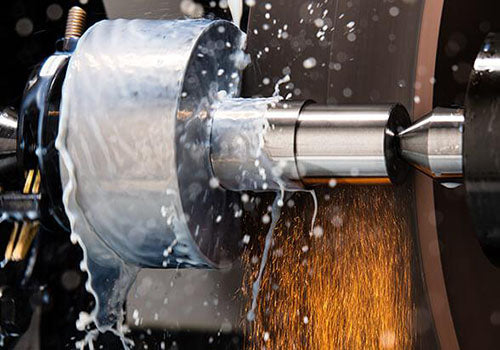
A Comprehensive Look at Different Types of CNC ID & OD Turning Toolholders
Share
CNC (Computer Numerical Control) machining has revolutionized the manufacturing industry, allowing for increased efficiency and precision in the production process. One of the critical components of CNC machines that enables accurate cutting of materials are the CNC ID (Inside Diameter) and OD (Outside Diameter) turning toolholders.
CNC turning is a subtractive manufacturing process that uses a lathe to cut a shape into a workpiece. The lathe holds the workpiece and rotates it while a cutting tool removes the unwanted material. Turning toolholders are used to hold the cutting tool in place and guide it as it cuts the material.
There are several types of CNC ID and OD turning toolholders available in the market, each specifically designed for various purposes. Understanding the different types of toolholders and their uses can help manufacturers to select the right toolholder for the job and ensure high-quality production.
Let's take a closer look at some of the most commonly used types of CNC ID and OD turning toolholders:
- Boring Bar Toolholders - These toolholders are designed to cut the inside diameter of a material. They are available in different lengths and diameters to suit various requirements. Boring bar toolholders are commonly used to create holes with a smooth and accurate finish.
- Turning Toolholders - These are the most commonly used toolholders for CNC machines. They are designed to cut the outside diameter of a material and are available in different shapes and sizes. Turning toolholders are used to create cylindrical shapes, such as shafts and rods, with a smooth surface finish.
- Threading Toolholders - These toolholders are designed to create threads on the inside or outside diameter of a material. They are available in different sizes and shapes depending on the type of threading required. Threading toolholders are commonly used to create threaded holes or screws.
- Grooving Toolholders - These toolholders are used to create grooves on the inside or outside diameter of a material. They are available in different widths and shapes to suit various requirements. Grooving toolholders are commonly used to create grooves for O-rings or snap rings.
- Parting Toolholders - These toolholders are designed to cut off a part of a material. They are available in different sizes and shapes to suit different materials. Parting toolholders are commonly used to separate a workpiece from the main stock.
Apart from the type of toolholder, it is also essential to consider the type of material being cut, the required depth of cut, and the desired finish when selecting a CNC ID or OD turning toolholder. Compatibility with the CNC machine being used is also a crucial factor to consider.
In conclusion, CNC ID and OD turning toolholders are critical components of CNC machines that allow for accurate and efficient cutting of materials. The different types of toolholders available provide a range of options for different cutting requirements. By selecting the appropriate toolholder for the job, manufacturers can ensure high-quality production, increased efficiency, and cost-effectiveness.




